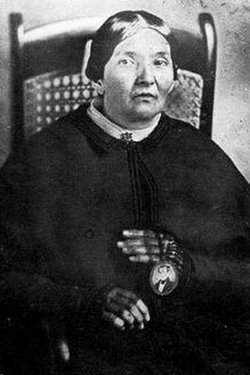This article is part of the series "A Moment in History" where we honor those who have contributed to the growth of medical knowledge in the areas of anatomy, medicine, surgery, and medical research.

Jane Todd Crawford - Daguerrotype
When writing the article “The Ephraim McDowell House and Museum” I realized that there are so many patients that by volunteering to a novel or sometimes experimental procedure or donating their bodies have been the catalyst of the advancement of medical science, surgery, and anatomy. Benigno says it so clearly in his paper explaining the physician/patient relation of McDowell and his patient: “Because of his innovative genius and finally honed surgical skills, Ephraim McDowell gave Jane Todd Crawford her life, and she, in return, gave him immortality”.
Few patients have influenced local history more than Jane Todd Crawford. In Kentucky there is a road named after her, a hospital bears her name in Greenville, KY, and there is even a formal "Jane Todd Crawford Day" on December 13!
By contrast, there are so many unknown patients whose names history has forgotten, and yet the fame of the physician continues through time in eponymic hospitals, educational institutions, named surgical procedures or maneuvers, surgical instruments, etc.
Some of the names and stories have survived, but many have not. In some cases, we know the name, but little else.
Dr. Henry Heimlich used his “Heimlich maneuver” for the first time to save his neighbor Patty Ris, in 2016, forty-two years after publishing it in 1974. The maneuver itself was used that same year (1974) to save the first person, Irene Bogachus, who was choking at a restaurant. Hundreds of thousands of people have been saved from death from choking by the proper use of this maneuver.
Dr. Christiaan Barnard, performed the first successful heart transplant on December 3, 1967. We know the name of the donor, 25 year-old Denise Darvall, and the recipient Lewis Washkansky.
Dr. Antoine Dubois and Dr. Dominique-Jean Larrey in France performed the first mastectomy on September 30, 1811. This was decades before the advent of anesthesia or aseptic technique. The patients was Fanny Burney, a famous novelist.
Dr. Edward Jenner developed the smallpox vaccine after working with a milkmaid, Sarah Nelmes. Jenner’s work saved the Americas from the smallpox epidemic through the work of Don Antonio de Gimbernat y Arbós and Don Francisco Javier de Balmis i Berenguer and his “Balmis Expedition”
The examples can continue, but who was the patient on the first Billroth procedure, who was the patient in the first Scopinaro procedure? Who was the patient on whom Dr. Eric Muhe performed the first laparoscopic cholecystectomy? Many are unknown yet they helped pave the way of the future.
The same can be said for the world of human anatomy. Today we honor the donors who will their bodies so that future physicians can study the intricacy of the human body, but we never know their names or their stories. Many a time I have stood at the side of a body while medical students dissect and study and wondered about their identities, the life they had, and what led them to give us their bodies as a wonderful gift to science and medicine.
There was a time (long ago) when the dissection of a human body was punished by the Church, or the times when the scarcity of bodies was such that some started to rob graves, or when the punishment for a crime was “death and a public anatomy”.
Some of these people we know, most of them we do not. Some have given their body willingly, others have not.
Joseph Paul Jernigan, a murderer, who after given the death penalty, donated his body to a now world-renown endeavor, the Visible Human Project.
The oldest known anatomical preparation is a skeleton mounted in Basel (Belgium) by Andreas Vesalius in 1543. The skeleton belongs to Jacob Karrer von Geweiler, a bigamist and attempted murderer who was beheaded for his crimes.
It is sad that we know the names of these criminals, and in some cases not that of their victims.
We do not know the names of many who, during the Nazi regime in WWII, were taken from concentration camps for medical experiments and as we understand, possibly murdered and dissected to illustrate now infamous anatomical atlases. Research is being done to discover their identities.
Times have changed and body donation has become accepted and praised by society. I am always touched by the words of Morgagni above the entrance to the dissection rooms at the University of Cincinnati: “hic locus est ubi mors gaudet succurrere vitae” meaning “in this place death rejoices helping the living”. The University of Cincinnati has an Annual Memorial Ceremony to honor the body donors and their families. A video of the ceremony can be watched here.
I cannot but end this article with the words that are found in the left side column of this blog and will always be there:
“Clinical Anatomy Associates, Inc., and the contributors of "Medical Terminology Daily" wish to thank all individuals who donate their bodies and tissues for the advancement of education and research”.



